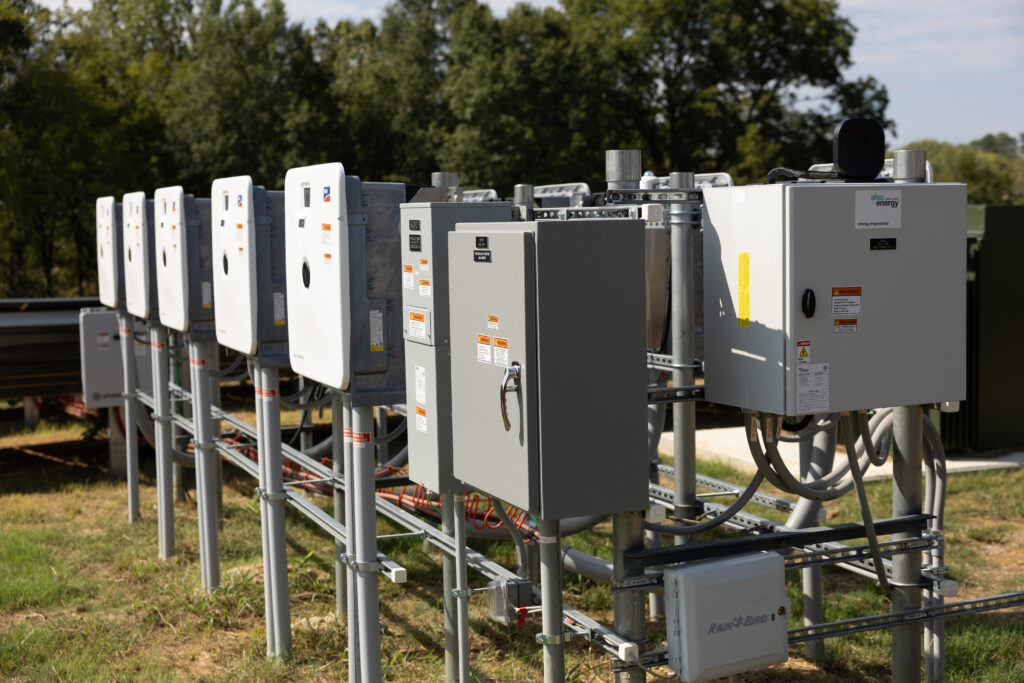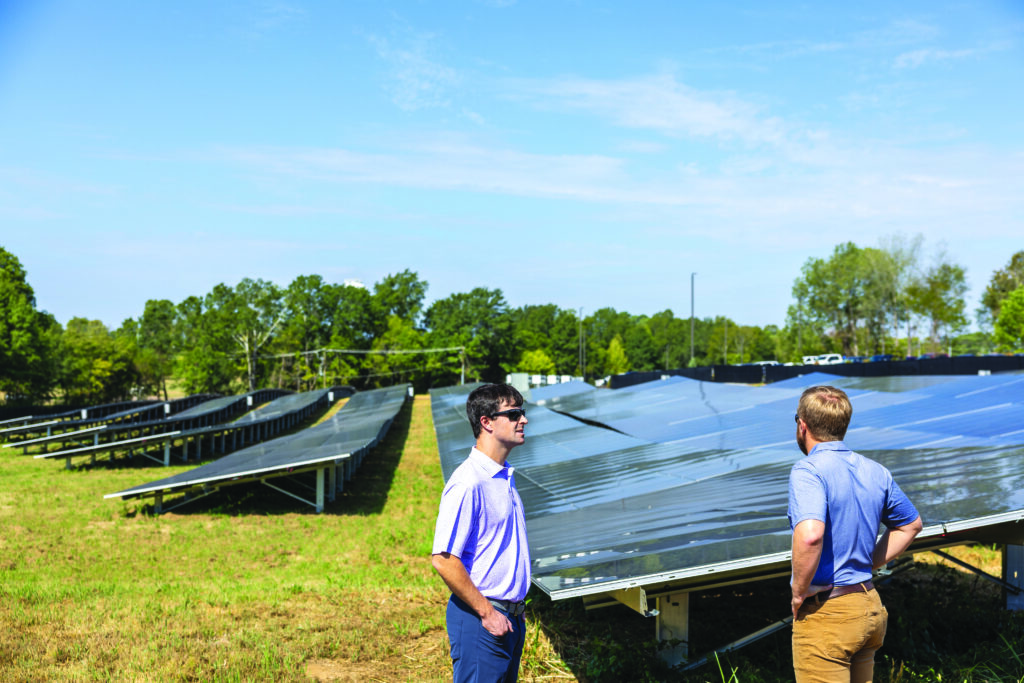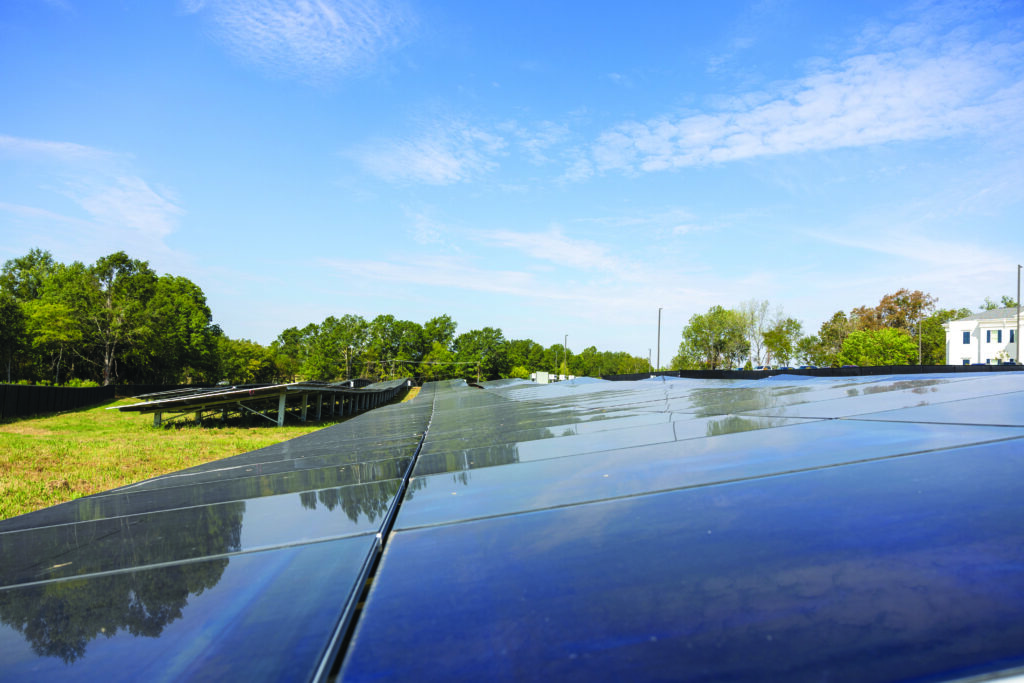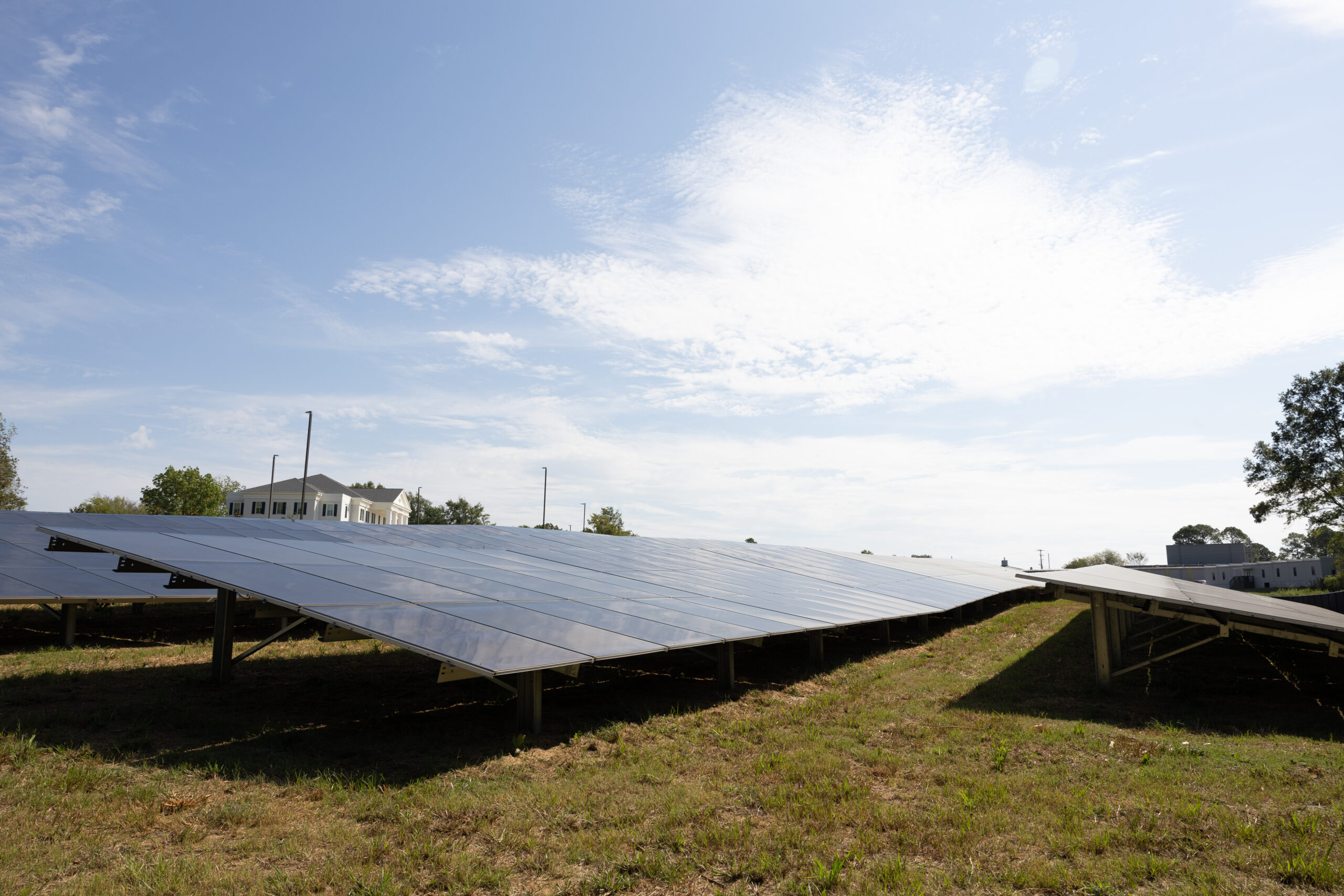Providing sustainable energy and learning opportunities
Mississippi State University has found a way to use a four-acre field between R.L. Jones Circle and Blackjack Road to reduce the campus’ carbon footprint and save energy consumption, while also saving money. The largest solar, on-campus facility in the Southeastern Conference, is energizing Mississippi State as part of a 30-year renewal energy efficiency project. The 3,420 solar panels installation was fully operational this summer.

“The impetus for the project was to continue seeking ways to be more sustainable by diversifying the means in which energy is produced,” said Saunders Ramsey, director of MSU’s campus services. “The project was funded internally, but the savings generated from the project will pay back the internal funds. We’re taking innovative action now to generate renewable, sustainable power right here on campus. It’s an exciting time and a mission that the entire campus community can champion.”
While the solar energy produced will be consumed on campus, in the future advice may be available for landowners who want to install solar panels. “University campuses across the U.S. are uniquely positioned to engage in solar energy projects for more reasons than just saving money,” said Les Potts, MSU interim vice president for Finance and Administration and CFO. “As solar farms continue to develop, more Mississippi landowners and utilities will consider the use of solar power on their property.”
Another possible outcome of the university’s solar-energy commitment is the creation of student learning opportunities. “Pre-professional, hands-on learning in such areas as design, production and solar farm maintenance and management could boost graduates’ employment potential as they enter the job market,” said Ramsey. “Students were involved from a sustainability perspective by participating in committees and other groups to help gain traction for such a project. They will also have the chance to participate in the learning opportunities provided by the finished product.”
The 3,420 solar panel installation will produce about 2.4 million kilowatt hours of energy annually, creating 2,400 average Renewable Energy Credits, or RECs, and saving—when connected with LED and other retrofit projects—$885,000 per year, plus an additional savings of $265,000 via a one-time rebate incentive from Tennessee Valley Authority.



“We’re taking innovative action now to generate renewable, sustainable power right here on campus. This solar structure is a visible symbol of Mississippi State’s commitment to reach our clean energy goals,” said Ramsey. “Clean energy development and production is the primary method by which the campus aims to realize it’s 30-year plan that began in 2012.
“Clean energy generation accounts for 45 percent of the total campus carbon reduction goal, with the second highest category—lighting and equipment retrofits—accounting for 20 percent of the goal. This combination will bring the university a huge increase in energy savings and make significant strides in the plan’s two most critical emission reduction areas,” added Ramsey.
Upgrades and solar modules together will help MSU benefit from a 7,548 metric ton annual carbon reduction and save a total of 10,784,865 kilowatt hours of energy per year.


